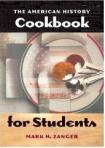 Unexpected change can happen at any time. Gary Bradt, author of The Ring in the Rubble, uses the metaphor of change, the kind that leaves one’s life turned upside down and in a pile of rubble, to be the time of significant personal growth and renewal.
Unexpected change can happen at any time. Gary Bradt, author of The Ring in the Rubble, uses the metaphor of change, the kind that leaves one’s life turned upside down and in a pile of rubble, to be the time of significant personal growth and renewal.
The image of digging through a pile of rubble is used to describe the process that one goes through in order to find the opportunities that are part of any crisis. The choice comes down to staying stuck in negative emotion and attitude, or working through the pain, fear, and uncertainty to find the “golden ring of opportunity” that is hidden in each unique situation.
The author begins each chapter by sharing with the reader how he lived through a serious family crisis and thereby learned the method he shares in the book of how to persevere and find the opportunity in change. Each chapter ends with five questions that assist the reader with applying the concept discussed in the chapter and encourages the reader to dig deeper in order to grow and benefit from the process.



 Posted by Mary Culhane, Librarian
Posted by Mary Culhane, Librarian 

